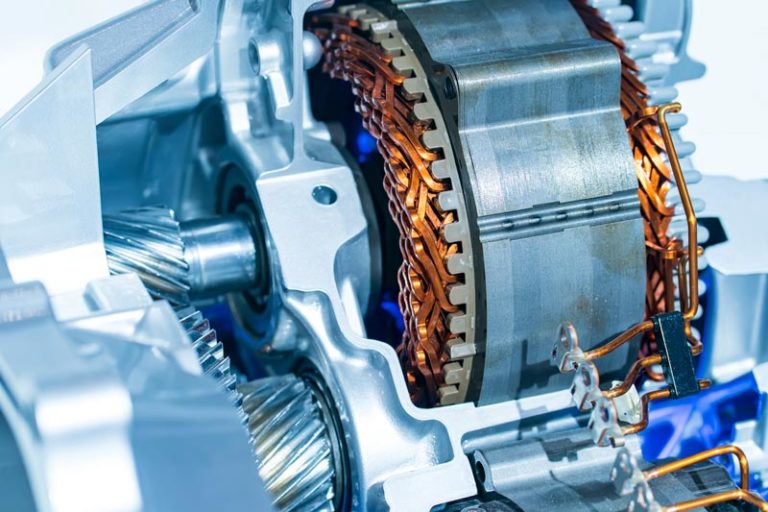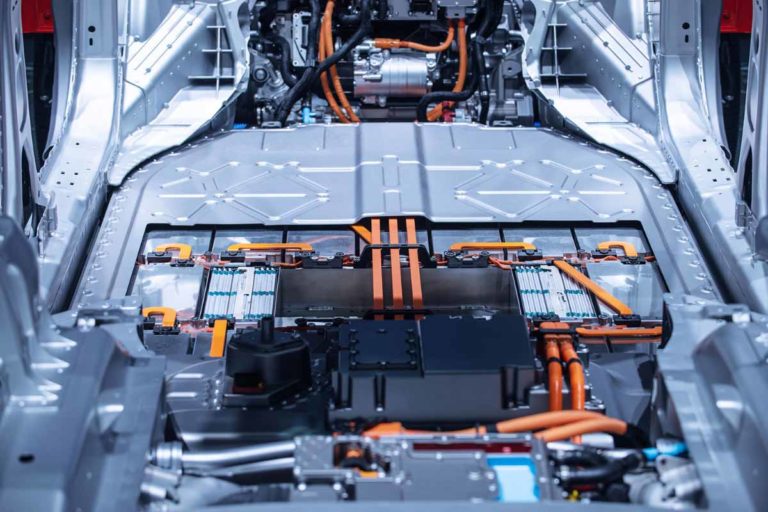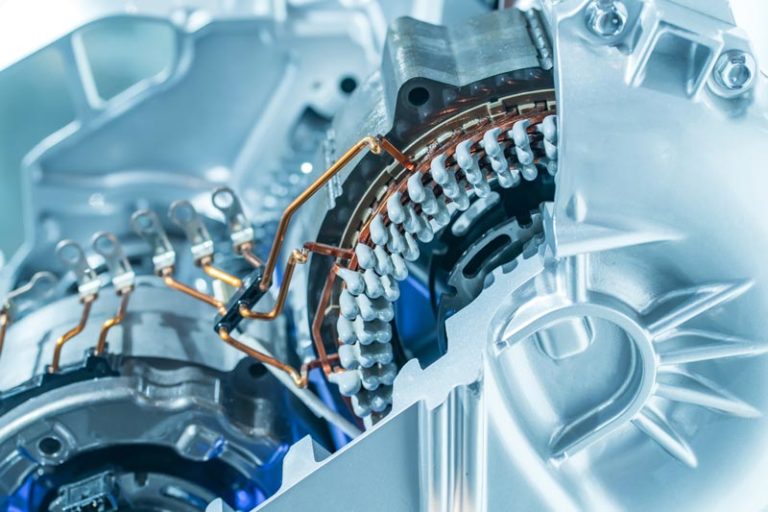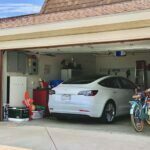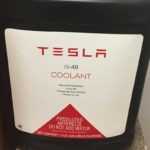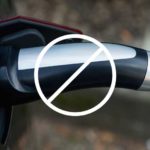Converting a combustion engine to an electric motor is quite the project, especially if you plan on doing the work yourself. But if you’ve already got the frame and body of the vehicle, all you need to do is swap out the components. Still, you’ll want to make sure you’re choosing the right motor for your conversion because electric motors are not a one-size-fits-all kind of deal.
You typically need to consider the weight and size of the platform. Some motors also require extra parts, and certain car bodies may not have enough space.
To help you choose right, let’s review some of the best electric motors for car conversions, their specifications, disadvantages and advantages, FAQs, and more.
- 4 Top Electric Motors To Convert Regular Cars into Electric Vehicles
- 1. DC Brushed Electric Motors
- 2. Brushless DC Electric Motor (BDCM)
- 3. Three-Phase Alternating Current (AC) Induction Motors
- 4. Permanent Magnet Synchronous Motor (PMSM)
- Different Cars and Their Motor Types
- What is Electric Vehicle Conversion?
- How Much do Electric Car Motors Cost?
- Can You Get DIY Kits for Electric Vehicle Conversion?
- How To Build an Electric Motor For a Car
- Car Conversion FAQs
- What Are The Benefits of Converting a Car to Electric?
- Is It Legal To Convert A Car to Electric?
- How Long Does An Electric Car Conversion Take?
- What Components Are Needed For An Electric Car Conversion?
- Can I Still Drive Long Distances After Converting My Car to Electric?
- Can I Charge My Converted Electric Car At Home?
- Can I Revert My Converted Car Back To Its Original Combustion Engine?
- Do I Need Any Specialized Skills or Knowledge to Perform an Electric Car Conversion?
- Can I Still Perform Maintenance and Repairs on an Electric Car Conversion?
- What is the Expected Lifespan of an Electric Car Conversion?
- Is the Performance of an Electric Car Conversion Good Compared to a Commercial EV?
- EV Speedy’s Take
4 Top Electric Motors To Convert Regular Cars into Electric Vehicles
(If you aren’t entirely sure what electric vehicle conversion is, you can scroll to the end of this article for more information!)
1. DC Brushed Electric Motors
The brushed DC motor has been around for a long time, and it was the go-to motor for a lot of applications. This was primarily due to its low construction costs and simple operation.
While these types of motors are widely used today, you won’t see them as often in high-performance, fully-electric vehicles. However, that doesn’t mean they wouldn’t work for your car conversion.
These motors consist of two magnets that encase an electromagnet-containing rotor. This rotor spins when an electric current is introduced, but it only goes 180 degrees. It’s the contact with the carbon brushes that allow the poles to shift and the motor to spin the full 360.
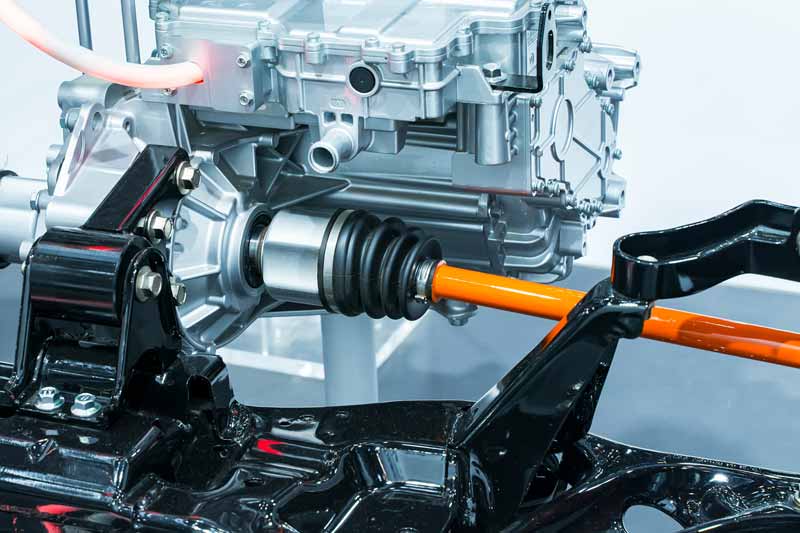
Advantages of Brushed DC Motors for Car Conversions
The biggest advantages of this type of motor include:
- They have a high initial torque, which means they work well for those that need to achieve high speeds quickly.
- They’re generally the more affordable option.
- They have a simple operation and lack some electronic parts that other motors will require.
Do you want to nerd out further and find the exact differences between Direct Drive and Transmissions? Then check out this related and helpful article that I wrote called:”EV Direct Drive vs. Transmission Compared“. I discuss the Pros and Cons of both.
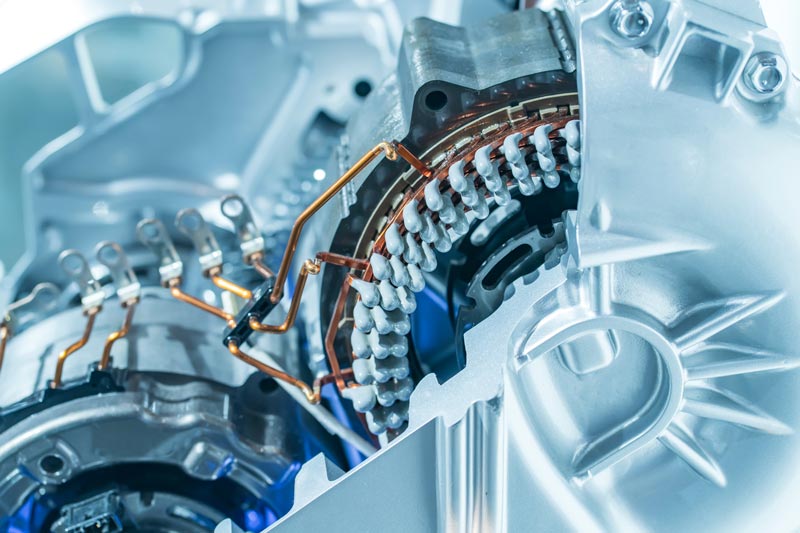
Disadvantages of DC Brushed Electric Motors
The brushes contained within these motors are one of the biggest disadvantages. They require a lot of maintenance and create a lot of friction. The friction may not only produce sparks, but it also generates heat, making these motors harder to keep cool.
Other disadvantages of these motors include:
- These motors often struggle at maintaining high speeds and often have a lower speed range.
- They might be noisier than other types of motors.
- Less efficient than many other motor types.
2. Brushless DC Electric Motor (BDCM)
The brushless DC motor was created to solve the problems created by the brushes in the DC motors.
The operation of the BDCM is essentially backward, where the magnets are on the rotor, and the surrounding electromagnetic field makes the rotor spin. Computers control the electric current, which means the BDCM requires additional devices that the brushed motor does not.
These motors are commonly used in smaller vehicles and hybrid cars, but you might also find them integrated into fully-electric machines.
Advantages of the BDCM for Car Conversions
The primary advantages of the BDCM include:
- Without brushes, they require less maintenance.
- Since there are no brushes that can potentially spark, a BDCM can operate at higher speeds for longer.
- They operate at a higher efficiency than the brushed motors.
- They are quieter than brushed motors.
- Less heat is generated, meaning the motor is easier to keep cool.
Disadvantages of the BDCM for Car Conversions
The main disadvantages include:
- You need a controller to keep the motor powered, which adds to the operational cost.
- They might experience periodic changes in torque, also known as a ripple.
3. Three-Phase Alternating Current (AC) Induction Motors
The three phase AC induction motor has been around since the late 1800s, but it has seen many design improvements throughout the twenty-first century. Now, it’s commonly found in the Tesla Model S and some vehicles from other popular EV makers. It’s a good option for an electric car conversion.
The induction motor doesn’t contain any magnets in the rotor. The magnetic field surrounding the rotor forces it into a spin. As a result, the rotor always rotates slightly slower than the rotation of the magnetic field, making induction motors asynchronistic.
Traditionally, AC induction motors were more expensive than DC motors, but they’ve caught up in recent years and might even be more affordable in some cases.
This YouTube video gives a more in-depth breakdown of how induction motors work.
Advantages of AC Induction Motors for Car Conversions
Advantages for the AC induction motor include:
- Like the brushless DC motors, AC motors don’t require brushes, making them quieter, safer, and lower maintenance.
- A simple, robust design makes AC motors maintain performance in rough terrains and environmental conditions.
- A power converter can reduce voltage when necessary, which maximizes efficiency while reducing magnetic losses.
- When braking with an AC induction motor, the rotor begins to spin faster than the magnetic field. As a result, these motors have regenerative properties that send power back to the vehicle’s battery.
- They are often better for longer, rougher trips.
Disadvantages of AC Induction Motors for Car Conversions
On the flip side, AC induction motors have some disadvantages, including:
- They require a power inverter, which means more parts and a higher starting cost.
- Torque performance might be lower compared to some DC motors.
- Induction motors can be harder to control and stabilize, which might also increase costs.
4. Permanent Magnet Synchronous Motor (PMSM)
As the name suggests, a PMSM uses permanent magnets inside the rotor, so instead of being pulled by an electromagnet, the rotor itself acts as the electromagnet.
Similar to the induction motor, the PMSM must be connected to an AC supply. However, unlike an induction motor, the PMSM is synchronous as opposed to asynchronous, meaning the rotation of the motor is in sync with the frequency of the AC supply. This keeps the speed of the rotor constant.
There are plenty of high-performance electric vehicles that utilize the PMSM. You can find them in the Tesla Model 3 and certain versions of the Model S, for example. It is thus also a good option for electric car conversions.
Advantages of a PMSM for Car Conversions
Due to the permanent magnet setup and the AC power supply, the permanent magnet synchronous motor is advantageous for several reasons, including:
- Torque is constant regardless of speed. This means they can maintain high torque at lower speeds and won’t experience slippage or torque ripple.
- Power density is high, meaning they have high power output compared to the size of the motor (which is small).
- They’re small in size and simple in design.
- The full-load capacity is higher than that of an induction motor.
- The lack of brushes and internal friction make them low maintenance and easy to cool.
Disadvantages of a PMSM for Car Conversions
The disadvantages of these types of motors include:
- They require the use of “rare earth metals” and sometimes have a high initial cost, which may not be ideal for a conversion on a budget.
- A PMSM will require some additional parts like a controller or inverter.
- They are sometimes more difficult to start than other types of motors.
Different Cars and Their Motor Types
Different brands use different motors, and some car models use multiple motors to combine features of more than one type of motor. There is thus not one specific best electric car motor, but rather different options with different pros and cons.
The Tesla Model 3, for example, uses an internal permanent magnet synchronous reluctance motor (IPM-SynRM), which combines features from the PMSM and the synchronous reluctance type motor.
While reluctance-style motors are gaining some traction, most EV manufacturers are using versions of the motors mentioned above.
The table below shows some electric cars and their motor details.
| Model | Motor Type | Horsepower | Max Speed | Hybrid |
| Chevy Volt | PMSM | 149 hp | 98 mph (160 kph) | Yes |
| Tesla Model S | AC Induction | 670 – 1,020 hp | 171 mph (275 kph) | No |
| Nissan Leaf | DC Brushless | 147 – 214 hp | 90 mph (145 kph) | No |
| BMW i3 | PMSM | 170 – 181 hp | 93 mph (150 kph) | No |
| Mercedes EQC | AC Induction | 402 hp | 112 mph (180 kph) | No |
| Ford Mach-E | PMSM | 266 – 488 hp | 130 mph (209 kph) | No |
What is Electric Vehicle Conversion?
Electric vehicle conversion refers to the process of transforming a conventional, gasoline-powered vehicle into an electric vehicle (EV) by replacing its internal combustion engine with an electric motor and a set of batteries.
This process typically involves removing the engine, fuel system, and other related components, and installing an electric motor, controller, and a battery pack in their place.
Additional modifications may be required to integrate the new components into the vehicle’s existing systems, such as the transmission, cooling system, and electrical system.
Electric vehicle conversion allows individuals to repurpose existing vehicles, reducing their environmental impact by eliminating tailpipe emissions and reducing reliance on fossil fuels.
It can be a complex undertaking, requiring knowledge of automotive mechanics, electrical systems, and battery technology, and is often undertaken by specialized conversion shops or experienced DIY enthusiasts.
How Much do Electric Car Motors Cost?
Before you begin converting a car to electric, you will have to set a budget and determine the cost of each of the components. You may be wondering, how much is an electric motor?
Electric car motors range from $1,000 to $15,000 or more. The cost varies dramatically depending on your requirements for power, torque, and efficiency, among other things.
Some electric vehicles are also equipped with more than one motor, with many high-performance EVs using one motor to power each wheel. With that in mind, you’ll have to decide how much motor power you’ll be needing.
All motors are going to come at a different price, but it might also depend on where you purchase the motor from.
The Different Options for Purchasing an Electric Motor
Sellers of EV motors and parts are growing in number. And with the increasing demand for electric vehicles, they will continue to do so. This also means that the used market for electric car parts will continue to grow as well, which is potentially good news for those interested in car conversions.
There are also plenty of companies that specialize in the sale and production of EV motors. As always, these places tend to be more predictable than a random seller on a marketplace.
For example, you can buy an electric motor from the manufacturer HPEVS or Curtis.
Some of the big car manufacturers also sell motors specifically for custom conversions. For example, you can buy Ford’s 281-HP Eluminator electric motor for just under $4,000.
In some cases, you might be able to find a wrecked electric vehicle that has most, if not all, of the parts you’d need for conversion, including the motor. If you’re lucky enough to get your hands on something like this, deals like this could be the most cost-effective option.
Can You Get DIY Kits for Electric Vehicle Conversion?
There are companies that sell electric conversion kits to make the process of converting your automotive motor to an electric one easier.
Such a motor kit can vary in price depending on the type of motor you want and how many other parts are included.
For example, I came across this Volkswagen VW Bus Conversion Kit on EVWest which includes everything you need to convert a Volkswagen Bus into an electric vehicle. This kit promises 90 miles of safe driving distance, so it doesn’t offer the same range as a Tesla, for example.
DIY kits like this can be a good option if you don’t have much experience with vehicle engines and electric conversions.
How To Build an Electric Motor For a Car
You might be wondering if you can build your own electric motor for your car. It is possible, but it is quite complex.
Here’s a simplified explanation for an everyday reader on how to build an electric motor for a car:
- Gather the necessary components: You’ll need a DC electric motor, a battery pack, a motor controller, and a way to secure the motor in the car.
- Prepare the car: Remove the internal combustion engine, fuel system, and other related components from the car to make space for the electric motor and battery pack.
- Mount the motor: Secure the electric motor in the car’s engine bay using suitable brackets and fasteners. Make sure it is properly aligned and connected to the drivetrain.
- Connect the battery pack: Install the battery pack in the car, ensuring it is securely mounted and connected to the motor controller. The motor controller regulates the power flow from the batteries to the motor.
- Wire the motor and controller: Connect the motor to the motor controller using appropriate wiring and ensure all connections are secure.
- Install control systems: Depending on the motor controller, you may need to install a throttle control, which allows you to control the speed of the motor.
- Test and troubleshoot: Double-check all connections and make sure everything is properly wired. Test the system to ensure the motor spins when the throttle is engaged. Troubleshoot any issues that arise.
It’s important to note that building an electric motor for a car is a complex and potentially dangerous task. It requires a deep understanding of automotive mechanics, electrical systems, and safety protocols.
It is strongly recommended to seek professional assistance or consult with experienced individuals or conversion shops to ensure the project is done safely and effectively.
Car Conversion FAQs
Here are some of the most critical car conversion FAQs:
What Is the Best Kind of Motor for an Electric Car?
What Are the Best Cars To Convert to Electric?
They’re also relatively cheap to buy, helping keep the conversion costs low.
With that said, most of the companies that specialize in the retro-fitting of electric motors on classic body styles can also build electric vehicles out of virtually any car model.
The absence of brushes also makes these motors suitable for rugged conditions, as it eliminates the main cause of sparks in motors.
What Are The Benefits of Converting a Car to Electric?
You’re probably wondering why converting your car to electric is such a great idea, and it’s a good question. Well, let me tell you about the amazing benefits that come with it!
First and foremost, electric car conversions are better for the environment. By eliminating the need for gasoline, you’ll be reducing your carbon footprint and doing your part to combat climate change.
Plus, with no emissions from your vehicle, you’ll be contributing to cleaner air in your community.
But the benefits don’t stop there. Converting your car to electric can also save you money in the long run.
Electric cars require less maintenance than traditional gas-powered vehicles since they have fewer moving parts and don’t require oil changes. And since electricity is typically cheaper than gasoline per mile driven, you’ll likely see savings on fuel costs as well.
So if you’re looking for a way to reduce your impact on the environment while also saving some money, consider electric car conversions as an option!
Is It Legal To Convert A Car to Electric?
If you’re considering converting your car to run on electricity, it’s crucial to check the legal requirements in your area. While electric vehicle conversions are becoming increasingly popular, laws and regulations regarding them vary by state and country.
In some places, it’s perfectly legal to convert a gas-powered car into an electric one, while in others, it may not be allowed or may require specific permits.
Before starting any conversion project, make sure to research the laws in your area thoroughly.
Additionally, it’s essential to purchase a conversion kit that meets all safety standards and regulations. While there are many DIY kits available online at lower prices than professional installations, these may not meet safety requirements or could even be dangerous.
Ultimately, ensuring that your conversion is legal and safe should be a top priority for anyone interested in switching their vehicle over to electric power.
How Long Does An Electric Car Conversion Take?
The duration of an electric vehicle conversion largely depends on the complexity of the project and the skill level of the person performing it. While some electric car conversions can be completed in a matter of days, others may take several months to finish.
If you’re considering converting your car to electric, it’s essential to have realistic expectations about how long the process will take. One factor that can impact the duration of an electric vehicle conversion is whether you choose to use a conversion kit or perform a custom build.
Conversion kits typically contain all of the components needed to convert a gasoline-powered car into an electric vehicle, which can save time during installation.
On the other hand, a custom build may take longer because each component needs to be sourced individually and fit together seamlessly.
Ultimately, no matter which route you choose for your electric car conversion, patience and attention to detail will be key factors in determining how quickly your project is finished.
What Components Are Needed For An Electric Car Conversion?
To convert a gasoline-powered vehicle into an electric one, you’ll need to replace or modify certain components.
The most important part of an electric conversion is the electric motor. It’s what provides the power to move the wheels and makes your conversion possible.
You’ll also need a controller to manage the flow of electricity from the battery pack to the motor.
The controller’s input voltage level is typically determined by the battery pack voltage, as it needs to match the battery’s volts for proper operation.
The controller then adjusts the voltage output to the electric motor based on the desired speed and power requirements. So, the voltage levels of the EV controller are directly influenced by the battery pack voltage.
Another crucial component is the battery pack, which stores energy for your car to use. A good battery pack can make all the difference in how far you can travel on a single charge.
There are many different types of batteries available, with varying capacities and prices.
Electric conversion kits are also available if you don’t want to source parts individually. These kits often include everything you need for your conversion, including instructions on how to install everything properly.
Note that electric motors, especially in EV conversions, can add significant weight to the vehicle due to the inclusion of battery packs. This increased weight can impact the suspension system and lead to problems. It might possibly require adjustments or modifications to ensure proper handling, stability, and ride comfort.
Can I Still Drive Long Distances After Converting My Car to Electric?
Yes, you’ll be able to travel long distances after converting your vehicle to run on electricity! However, you probably won’t get as much range out of a converted car as you would from a Tesla, for example.
One of the key components you need for an EV conversion is a battery pack. This battery pack stores the energy that powers your car’s electric motor, and the larger the battery pack, the farther you’ll be able to drive on a single charge.
Depending on the size of your battery pack and how efficiently your car converts electrical energy into motion, some converted cars can travel up to 300 miles or more on a single charge!
Of course, driving long distances in an EV does require some planning ahead. You’ll need to make sure there are charging stations along your route so you can recharge your battery as needed.
Fortunately, there are now thousands of public charging stations located across the country, and many hotels and shopping centers also offer charging options for their customers.
With a little bit of forethought and planning, you should have no problem taking long road trips in your newly-converted electric car!
Can I Charge My Converted Electric Car At Home?
You can easily charge your converted vehicle at home with the right equipment and setup. After your EV conversion is complete, you’ll need to install a charging station or purchase a portable charger that’s compatible with your battery pack.
Most EV owners choose to install a Level 2 charging station at home, which provides a faster and more efficient charge than a standard household outlet.
To ensure that you have the proper setup for charging your electric car, it’s important to consult with an experienced electrician who can guide you through the process.
They’ll help determine the best location for installation and make sure that all electrical work meets safety standards.
With a reliable charging infrastructure in place, you can enjoy the convenience of refueling your vehicle from the comfort of your own home with a single click while reducing emissions and saving money on fuel costs.
Can I Revert My Converted Car Back To Its Original Combustion Engine?
If you’ve converted your vehicle to run on electricity, it’s possible to switch back to its original combustion engine. However, reverting a converted electric car back to its original state can be a complicated process and may require professional assistance.
Electric car conversions can be irreversible in many cases. Before making the decision to convert, consider if you’re willing to commit to an electric lifestyle for the long haul.
But if you do want to revert your electric car back to its original combustion engine, seek out a qualified mechanic who can assess the situation and provide options for how best to proceed.
Do I Need Any Specialized Skills or Knowledge to Perform an Electric Car Conversion?
Performing an electric car conversion typically requires specialized skills and knowledge, particularly in areas such as automotive mechanics, electrical systems, and EV technology.
It is recommended to have expertise or seek professional assistance during the conversion process to ensure safety and optimal performance.
Can I Still Perform Maintenance and Repairs on an Electric Car Conversion?
You can still perform maintenance and repairs on an electric car conversion. However, it’s important to have a good understanding of the specific components and systems in an electric vehicle.
While some aspects may differ from conventional combustion engine vehicles, routine maintenance tasks such as tire rotations, brake inspections, and suspension checks can still be carried out.
For more complex repairs, it may be advisable to consult with experts in electric vehicle conversions.
What is the Expected Lifespan of an Electric Car Conversion?
The expected lifespan of an electric car conversion can vary depending on various factors, including the quality of components used, maintenance practices, and overall vehicle condition.
Generally, if a conversion is done properly using reliable components and well-maintained, the converted electric vehicle can have a lifespan comparable to that of a commercially manufactured electric vehicle, which is typically several years or more.
Is the Performance of an Electric Car Conversion Good Compared to a Commercial EV?
The performance of an electric car conversion can vary depending on factors such as the power of the electric motor, battery capacity, and weight distribution.
While a well-executed conversion can offer good performance, it may not always match the performance capabilities of commercially manufactured electric vehicles that are designed and engineered specifically for electric propulsion.
However, with proper component selection and tuning, electric car conversions can still deliver impressive acceleration, torque, and overall driving experience.
EV Speedy’s Take
Some of the most popular EV manufacturers, like Tesla, are using AC induction motors and PMSMs in a lot of their models, so you can have some confidence that these motors would provide the performance and reliability that you need in a vehicle.
Check out these 20 great gift ideas for yourself or a Tesla fanboy.
Contact Us if you have any questions or queries.


